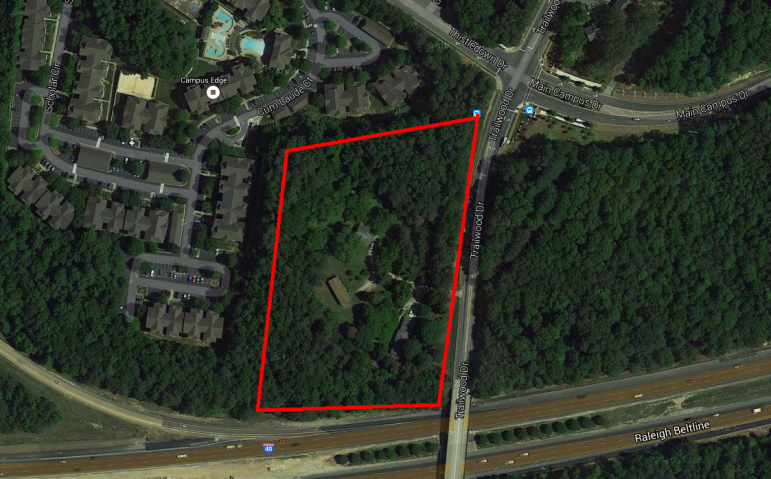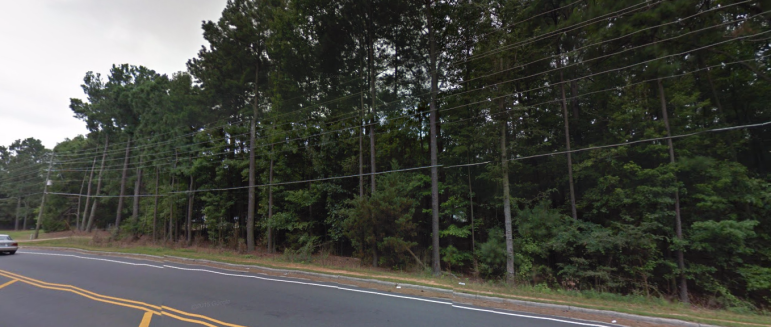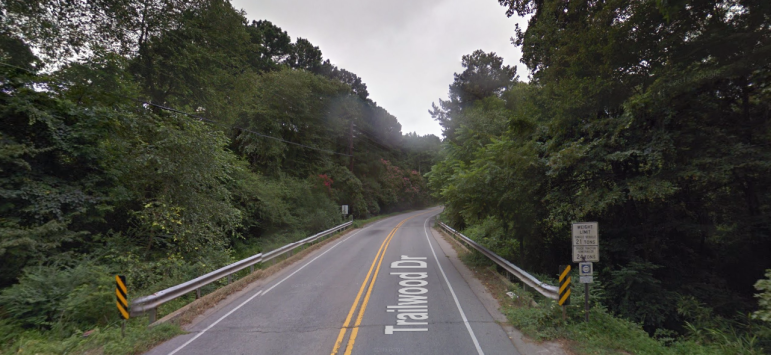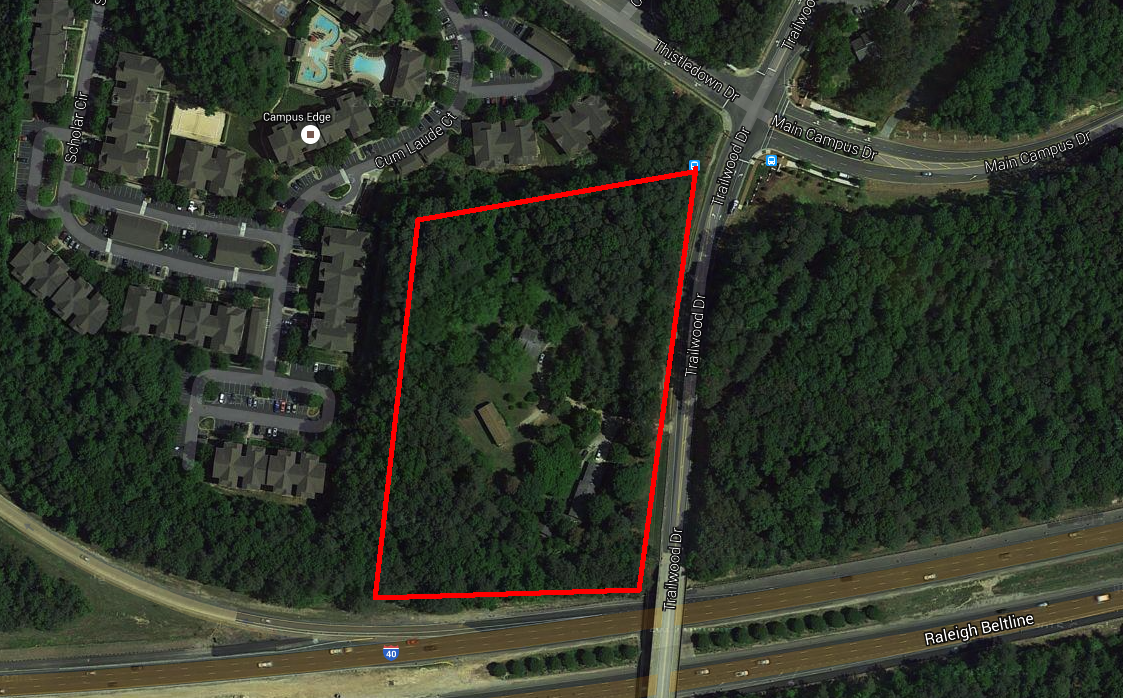Heavy rains, wind and the threat of tornadoes can’t stop the Growth and Natural Resources Committee.
Members of the City Council committee met for a brief 30-minutes on Wednesday to discuss a controversial rezoning – Z-39-15 – on Trailwood Drive that, if approved, would allow for a four-story student housing development on currently undeveloped property.

Google Maps
The site of the proposed apartment complex is outlined in red
With concerns that increased traffic will have a negative effect on the area, committee members at a previous meeting, asked the applicant come back with a traffic impact analysis.
They did, but City planning staff didn’t have enough time to review the study before the meeting. At the request of committee chairwoman, City Councilor Kay Crowder, a decision will be made at the next meeting on March 9.
The rezoning would increase the density for the five-acre parcel from six units per acre to 14, or from a maximum number of 33 units to 78. The height of the project, which would consist of apartments with one to four bedrooms, would come in at four stories. A nearby student housing development sits at three.
Neighbors in the nearby single-family housing communities oppose the project, arguing that it’s a high-density project in an inappropriate area. It has been unanimously opposed at two West Citizens Advisory Council meetings.
Keeping in line with the existing development, neighborhood spokesperson Tom Kwak, said the community is willing to compromise with a three-story development at 10 units per acre.
Kwak said neighbors are in favor of the high-density residential near campus, which allows students to walk to classes, restaurants and other entertainment venues. The area near Centennial Campus, however, isn’t served by the Wolfline and would require students to use their cars. “We consider it poor city planning,” he said.

Google Maps
The site today
Responding to the concerns of the neighborhood, attorney Lacy Reaves said the developer was prepared to propose 12 units per acre, which would bring the total number of units down to a little more than 60.
“It’s not 10, but it’s not 14,” he told committee members. “We think it’s a good faith response to the position that has been taken by the neighbors.”
He added that they were willing to add another condition that no more than half of the units would be four bedrooms.
Councilor and committee member Russ Stephenson pointed out that this area on the Future Land Use Map is designated as Moderate Density Residential, which consists of six to 14 units per acre. He noted that 14 is already on the high end of that range.
Reaves acknowledged his comment and replied that it was one of the reasons why they backed down to 12. He added that because the property backed-up to I-440, it wasn’t appropriate for single family residential and that a multifamily development would be better suited.
While the traffic study wasn’t discussed at the meeting, Trailwood Drive resident Wendell Gilliam said he already experiences the traffic problems in the area. He said accidents in front of his home increase at the start of every semester and that at the request of the mailman, he had moved his mailbox into his driveway where it was safer.
“I haven’t seen a case of spot zoning any worse than this,” he said.
Spot zoning is generally defined as “the application of zoning to a specific parcel or parcels of land within a larger zoned area when the rezoning is usually at odds with a city’s master plan and current zoning restrictions.”
Reaves did not provide details of the traffic study, but reiterated his statements from the previous meeting, at which he said the impact from the development would be minimal.
Talking briefly, Crowder said, “I do think it’s important to acknowledge something that’s the big white elephant in the room. The Trailwood bridge is now closed.”
Both the Trailwood bridge and the Lake Dam bridge are closed, exacerbating any traffic problems through the area. She said at best, the Trailwood bridge would be opening in late 2017.

Google Maps
This bridge was closed by the NCDOT on February 12 “in the best interests of public safety.”
